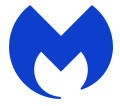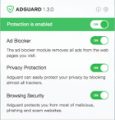What is DefaultExplorer
DefaultExplorer is a malicious application that belongs to the Adware category. It does not delete files or infect them, but can display unwanted ads, modify web-browser settings, download and install malicious browser extensions. All the time, while DefaultExplorer is running, your browser will be fill with intrusive advertisements. Most likely, the adware has been installed on your Mac without your’s permission and you don’t even know how and where this unwanted software has got into your machine
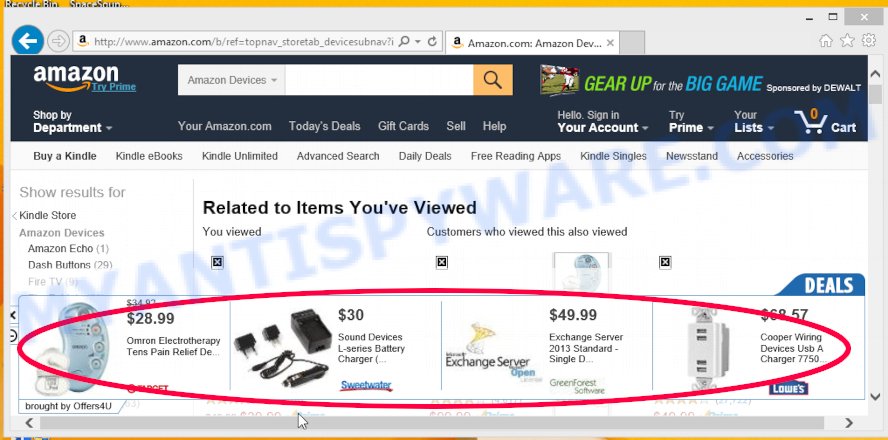
Unwanted ads
The worst is, the DefaultExplorer adware has the ability to collect lots of privacy information about you that can be later sold to third party companies. You don’t know if your home address, account names and passwords are safe. So, we recommend you delete it sooner. This will also prevent the adware software from tracking your online activities. A full DefaultExplorer removal can be easily carried out using manual or automatic solution listed below.
How does DefaultExplorer get on your computer
In most cases, a freeware installation package includes additional applications like this adware. So, be very careful when you agree to install anything. The best way – is to choose a Custom, Advanced or Manual setup method. Here reject all third-party software in which you are unsure or that causes even a slightest suspicion. The main thing you should remember, you do not need to install any optional software which you do not trust!
Threat Summary
| Name | DefaultExplorer, DefaultExplorer 1.0 app |
| Type | adware software, potentially unwanted program (PUP), Mac virus, Mac malware |
| Detection Names | Adware.MAC.Generic, Trojan-Downloader.OSX.Adload, MacOS.Agent-MT, OSX.Trojan.Gen, ApplicUnwnt, Osx.Adware.Cimpli, Program:MacOS/Vigram.A and Adware/Adload!OSX |
| Distribution | Freeware installers, torrent downloads, shady pop-up ads and fake software updaters |
| Symptoms | When you go to a web site, you’re occasionally redirected to another web page that you do not intend to visit, popups and newtab pages are loaded without your request, your computer starts automatically installing unwanted apps, new toolbars on your desktop, your Mac settings are being modified without your request, slow Internet or slow browsing. |
| Removal | DefaultExplorer removal guide |
How to remove DefaultExplorer adware
Most commonly adware requires more than a simple uninstall with the help of the Finder in order to be fully deleted. For that reason, our team created several removal solutions that we have combined in a detailed guidance. Therefore, if you’ve DefaultExplorer on your Mac and are currently trying to have it removed then feel free to follow the steps below in order to resolve your problem. Read this manual carefully, bookmark it or open this page on your smartphone, because you may need to close your web browser or restart your computer.
To remove DefaultExplorer, use the steps below:
- Remove profiles created by DefaultExplorer
- Check the list of installed apps
- Remove DefaultExplorer related files and folders
- Scan your Mac with MalwareBytes
- Remove DefaultExplorer from Safari, Chrome, Firefox
- How to stay safe online
Remove profiles created by DefaultExplorer
DefaultExplorer can install a configuration profile on the Mac system to block changes made to the browser settings. Therefore, you need to open system preferences, find and delete the profile installed by the adware software.
Click the System Preferences icon ( ![]() ) in the Dock, or choose Apple menu (
) in the Dock, or choose Apple menu ( ![]() ) > System Preferences.
) > System Preferences.
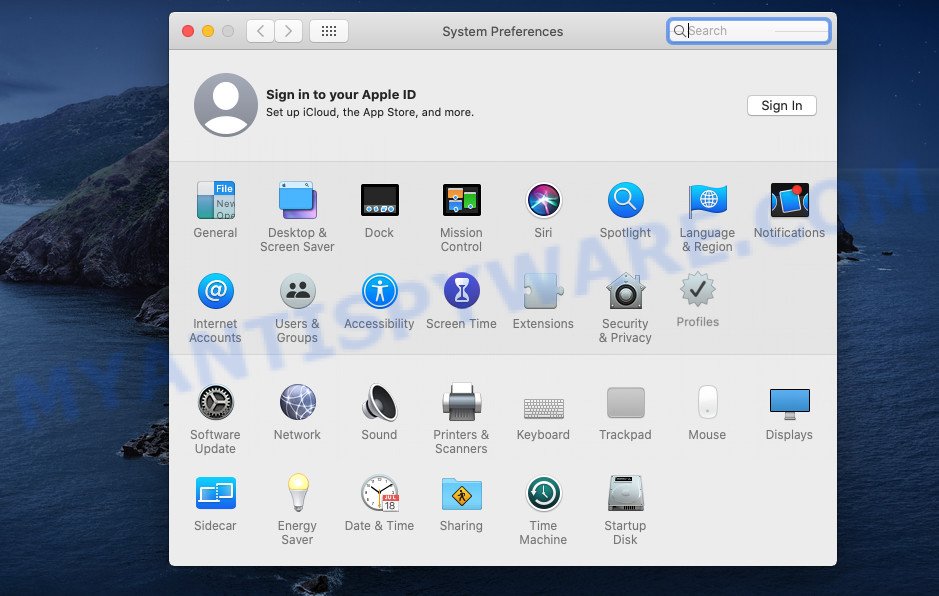
In System Preferences, click Profiles, then select a profile associated with DefaultExplorer.
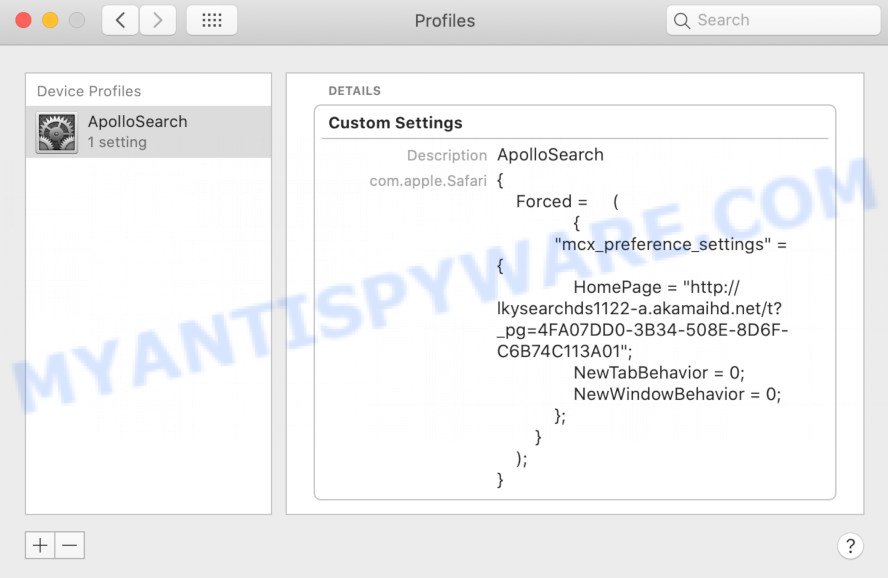
Click the minus button ( – ) located at the bottom-left of the Profiles screen to remove the profile.
Note: if you do not see Profiles in the System Preferences, that means there are no profiles installed on your Mac, which is normal.
Check the list of installed apps
In order to remove DefaultExplorer you need to do is to delete unknown and suspicious applications from your MAC system using the Finder. When removing potentially unwanted programs, browser hijackers and adware software, check the list of installed applications and try to find questionable applications and remove them all. Pay special attention to recently installed applications, as it’s most probably that DefaultExplorer сame along with it.
Open Finder and click “Applications”.
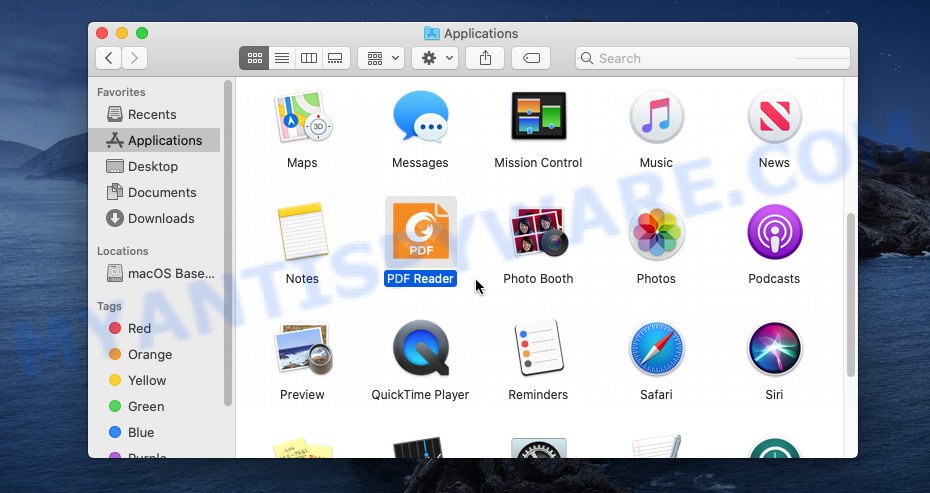
It will open a list of all applications installed on your MAC system. Scroll through the all list, and uninstall any questionable and unknown apps. Right click to suspicious program and select “Move to Trash”. Another solution is drag the program from the Applications folder to the Trash.
Most important, scroll through the all list, and move to trash any unknown applications. Don’t forget, choose Finder -> Empty Trash.
Remove DefaultExplorer related files and folders
Now you need to try to find DefaultExplorer related files and folders, and then delete them manually. You need to look for these files in certain directories. To quickly open them, we recommend using the “Go to Folder…” command.
DefaultExplorer creates several files, these files must be found and removed. Below is a list of files associated with this unwanted program.
- /Library/LaunchDaemons/com.DefaultExplorer.system.plist
- ~/Library/LaunchAgents/com.DefaultExplorer.service.plist
- /Library/Application Support/.(RANDOM)/System/com.DefaultExplorer.system
- ~/Library/Application Support/.(RANDOM)/Services/com.DefaultExplorer.service.app
Click on the Finder icon. From the menu bar, select Go and click “Go to Folder…”. As a result, a small window opens that allows you to quickly open a specific directory.

Check for DefaultExplorer generated files in the /Library/LaunchAgents folder

In the “Go to Folder…” window, type the following text and press Go:
/Library/LaunchAgents
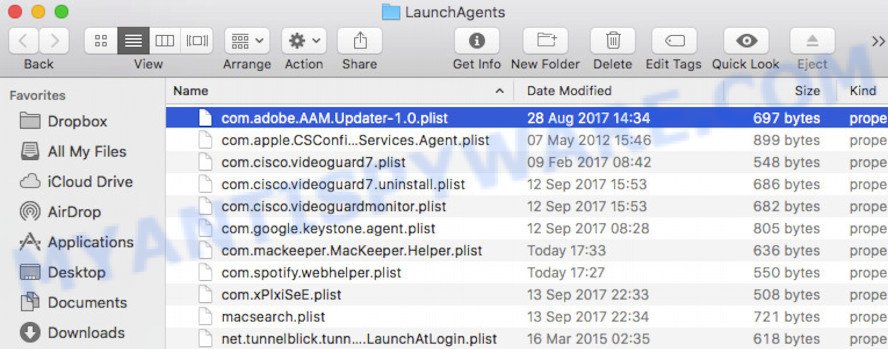
This will open the contents of the “/Library/LaunchAgents” folder. Look carefully at it and pay special attention to recently created files, as well as files that have a suspicious name. Move all suspicious files to the Trash. A few examples of files: com.machelper.plist, com.google.defaultsearch.plist, , search.plist, com.DefaultExplorer.service.plist, installapp.plist, macsearch.plist and com.net-preferences.plist. Most often, browser hijackers, adware and potentially unwanted programs create several files with similar names.
Check for DefaultExplorer generated files in the /Library/Application Support folder

In the “Go to Folder…” window, type the following text and press Go:
/Library/Application Support
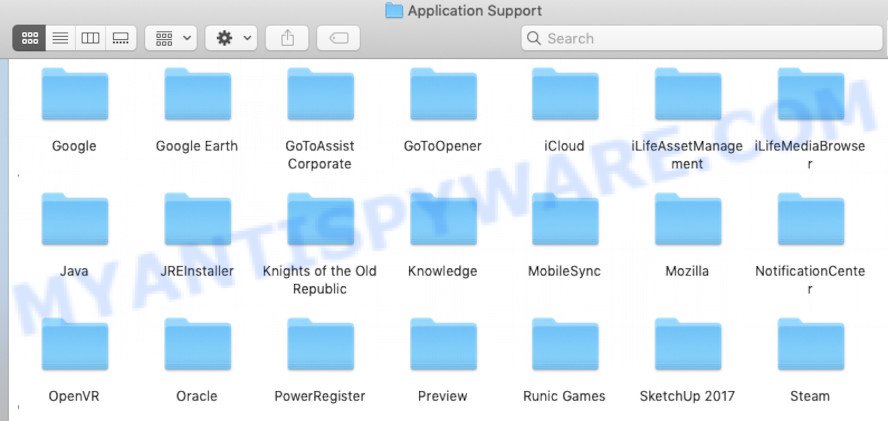
This will open the contents of the “Application Support” folder. Look carefully at its contents, pay special attention to recently added/changed folder. Check the contents of suspicious folders, if there is a file with a name similar to com.DefaultExplorer.system, then this folder must be deleted. Move all suspicious folders to the Trash.
Check for DefaultExplorer generated files in the “~/Library/LaunchAgents” folder

In the “Go to Folder…” window, type the following text and press Go:
~/Library/LaunchAgents

Proceed in the same way as with the “/Library/LaunchAgents” and “/Library/Application Support” folders. Look for suspicious and recently added files. Move all suspicious files to the Trash.
Check for DefaultExplorer generated files in the /Library/LaunchDaemons folder
In the “Go to Folder…” window, type the following text and press Go:
/Library/LaunchDaemons

Carefully browse the entire list of files and pay special attention to recently created files, as well as files that have a suspicious name. Move all suspicious files to the Trash. A few examples of files to be deleted: com.search.system.plist, com.installapp.system.plist, com.machelper.system.plist, com.DefaultExplorer.system.plist and com.macsearch.system.plist. In most cases, adware, PUPs and browser hijackers create several files with similar names.
Scan your Mac with MalwareBytes
We suggest using MalwareBytes. You can download and install MalwareBytes Anti-Malware to scan for and delete DefaultExplorer associated apps from your Mac device. When installed and updated, the malicious software remover automatically finds and removes all security threats present on the MAC OS.
Installing the MalwareBytes AntiMalware (MBAM) is simple. First you’ll need to download MalwareBytes from the following link. Save it to your Desktop.
21024 downloads
Author: Malwarebytes
Category: Security tools
Update: September 10, 2020
After the download is done, close all applications and windows on your MAC system. Run the saved file. Follow the prompts.
The MalwareBytes will automatically start and you can see its main screen as displayed in the figure below.
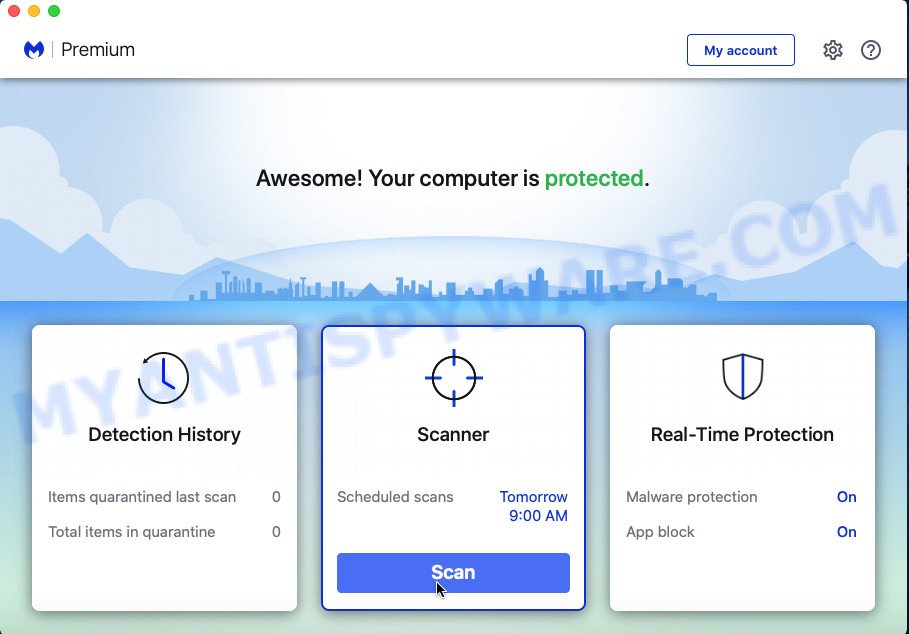
Now press the “Scan” button . MalwareBytes Anti Malware application will scan through the whole MAC for the DefaultExplorer adware. Depending on your MAC system, the scan can take anywhere from a few minutes to close to an hour. While the MalwareBytes Anti-Malware (MBAM) is checking, you can see how many objects it has identified either as being malicious software.

When MalwareBytes Free completes the scan, it will open the Scan Results. Make sure all items have ‘checkmark’ and click the “Quarantine” button. The MalwareBytes will remove DefaultExplorer adware software and move the selected items to the Quarantine.
Remove DefaultExplorer from Safari, Chrome, Firefox
Annoying DefaultExplorer adware software or other symptoms of adware software in your internet browser is a good reason to locate and remove harmful add-ons. This is an easy way to restore web-browsers settings and not lose any important information.
You can also try to remove DefaultExplorer adware by reset Chrome settings. |
If you are still experiencing issues with DefaultExplorer adware removal, you need to reset Firefox browser. |
|
How to stay safe online
To put it simply, you need to use an ad-blocker utility (AdGuard, for example). It will stop and protect you from malicious web sites, unwanted ads and pop ups. To be able to do that, the ad blocking program uses a list of filters. Each filter is a rule that describes a malicious web site, an advertising content, a banner and others. The adblocker application automatically uses these filters, depending on the web-pages you are visiting.
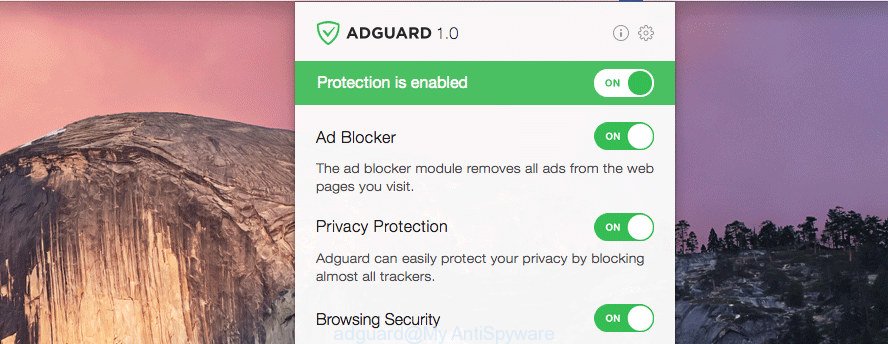
AdGuard can be downloaded from the following link.
3782 downloads
Author: © Adguard
Category: Security tools
Update: January 17, 2018
Once downloading is complete, launch the downloaded file. You will see the “Setup Wizard” screen. Follow the prompts.
Each time, when you launch your computer, AdGuard will launch automatically and stop intrusive pop-up advertisements, block malicious and misleading webpages.
Finish words
Now your MAC system should be clean of the DefaultExplorer adware. We suggest that you keep MalwareBytes (to periodically scan your MAC OS for new adware and other malicious software) and AdGuard (to help you stop unwanted pop up ads and malicious webpages). Moreover, to prevent any adware, please stay clear of unknown and third party programs.
If you need more help with adware software related issues, go to here.
